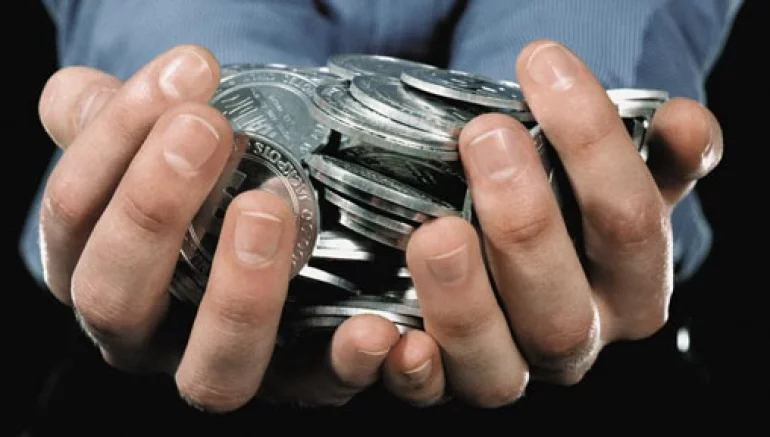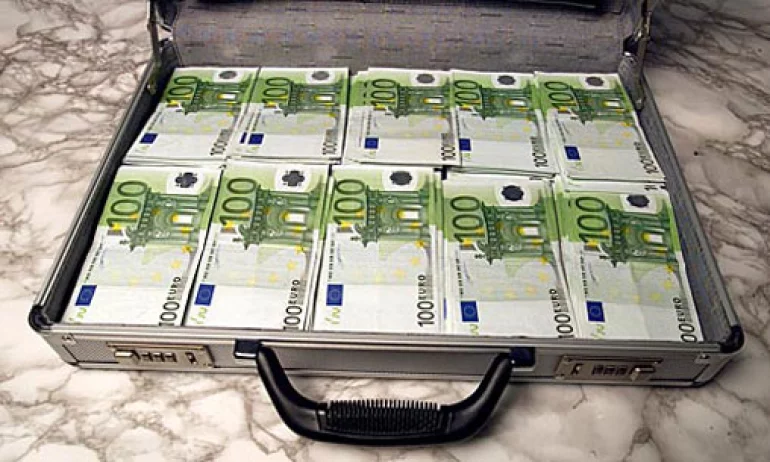We continue to tell our readers about illegal manipulations made by fraudsters in gambling. The first part of this article can be found by following the link.
_770.webp)
Gamblers' Winnings
Winnings are the easiest way to use black money in gambling to obtain a legitimate income. To do so, you just need to play slot machines or participate in other games that require small fees but provide high chances of winning. Then, you wait for the victory, receive a cheque, and cash it.
The Purchase of Winnings from Successful Players
Another method is used in the gambling business. Fraudsters offer a large sum of cash to a player. This amount exceeds the winning. They use gamblers who have won a jackpot by playing slot machines or a large number of chips at the table or by participating in other gambling games available in some casinos, such as electronic lotteries, horse racing, or sports lottery.Parallel Bets
Parallel bets are usually used in games with low wagers and low risk of losing money, such as roulette. Two or more fraudsters participate in the game, making opposite bets of the same amount.
- For example, the player A wagers $1,000 on red, and the player B stakes $1,000 on black.
- The player B can also wager $60 on zero just for insurance, although this bet is often lost.
- If one of the players wins, the bet is doubled, and the second wager is lost.
- After that, the winner will receive about $2,000, which he or she can get through a cheque.

There is a network of 33 thousand betting terminals called FOBT (fixed odds betting terminal) in the United Kingdom. They are located in certain betting shops. Technically, they are slot machines set up to allow players to play one of the casino games (usually roulette).
This is a favorite place where English criminals launder money. Betting shop owners are well aware that criminals, drug dealers, and representatives of criminal structures are among the players, but they are difficult to find.
The standard betting scheme of fraudsters is as follows: They wager 20 pounds on red and black and 2 pounds on zero. This scheme is unprofitable, but roughly 5-10 percent of the total amount of laundered money is lost over the long run.
This is a very good percentage since all criminal structures usually spend at least 25-40 percent on money laundering. Losing half of the proceeds to make them legal is even acceptable.
Investigations in Spain that are primarily related to drug trafficking, corruption, and tax evasion showed that fraudsters had used gambling to launder money. The method implied the purchase of winning lottery tickets from casino customers.
*****
The group of non-residents bought jackpots from other players in various gambling clubs in Sydney, Australia. During the year, the suspects deposited 1.7 million Australian dollars through winning cheques and immediately withdrew funds in cash. To be sure, the funds used to purchase winning jackpots were illegal.
Indicators of Money Laundering Using Winnings
- The frequent winnings of jackpots by the same player.
- There are frequent cases of deposit formation using winning cheques. The funds are then immediately withdrawn as cash.
- Customers are present near the sites where the jackpots are paid out but don't participate in gambling.
- There are numerous cases of redeeming chips for cash per day.
- Customers are informed about the release of deposited funds or payouts with jackpots.
- The purchase and exchange of chips for cash without participation in gambling.
- The request to split a winning hand forms a certain amount of cash and chips. These amounts don't meet the minimum financial reporting requirements.
- The frequent operations of redeeming chips for cash are inconsistent with the purchase of chips.
- Winnings that consist of chips, cheques, and cash are redeemed for cash.
Cash Exchange
Considering the popularity of casino tours and clients' desire to attend legal casinos, most offer currency exchange services. Criminals involved in the drug trade often use casino services to exchange criminal proceeds from one currency to another to change the origin of money. Individuals and groups also use structuring methods to exchange currency with the help of operations whose amounts don't reach the minimum financial reporting requirements.
They operate in different casinos, and after the exchange, they combine all the amounts to form the entire sum.

Exchange of Huge Amounts of Currency
Fraudsters can conduct large, one-time, or frequent currency exchange operations and deposit currency into accounts. This is usually not considered suspicious in casinos with many foreign tourists.The Participation in Casino Games to Exchange Currency
Sometimes, fraudsters participate in gambling games only to exchange currency. At some casinos, customers can buy chips only in foreign currency. For example, in Nepal, customers purchase chips in US dollars and Indian rupees.
The non-residents of Spain visited one Spanish casino separately to buy chips for Swiss francs. This criminal group intended to redeem the chips for Euros. The casino security service noticed these operations, ceased them, and notified the police of this crime.
Indicators of Money Laundering Using Currency Exchange:
- Bank cheques are redeemed for cash.
- Frequent currency exchange operations.
- A significant or sharp increase in the volume and frequency of currency exchange operations by account holders.
- Currency exchanges without reasonable explanations.
- Customers change small-denomination banknotes to high-denomination bills.
- The third parties exchange currency.
- Unknown customers frequently exchange huge amounts of currency.
- Customers who rarely gamble or don't gamble at all exchange currency.
Collaboration with Casino Employees
Casino employees' involvement is very convenient for fraudsters. Workers or their organized groups, which include employees from different casino departments, collaborate with clients to cheat the casino and prevent fraud exposure.

The following methods can be used:
- Employees don't make reports about suspicious operations that reach the minimum financial reporting requirements.
- The elimination of documents and reports about the operations related to the audit or reporting process.
- The falsification of a player's rating and other records to justify the accumulation of chips or credits in slot machines.
Some casinos have found weaknesses in suppliers of gaming equipment and slot machines and contractors who provide them with products. These weaknesses may influence the transparency of operations. Criminals may also try to use the gambling equipment and computer systems associated with it to commit theft and launder money in casinos.
A former casino employee was noticed by the investigating authorities of Australia when he was buying a house, paying for it in cash. There were suspicions that the family of the man had been involved in drug trafficking. His family provided the funds.
However, this man could show his rating at another casino to prove that he earned over 400,000 Australian dollars in two weeks with the help of 20,000 Australian dollars. There are suspicions that an accomplice from the second casino falsified this rating, but verifying this fact is impossible.
*****
In Florida, income from drug trafficking was laundered using slot machines. Some slot machines are controlled by software that has the backdoor effect, i.e., casino employees can regulate the payout percentage. In Florida, drug dealers bribed the casino staff, who had access to slot machines. These employees set up several video slots so that players could frequently win jackpots.
Indicators of the casino employees involved in frauds:
- The connection between regular customers and casino staff beyond the casino.
- The possible winnings do not correspond to the records about them.
- A sharp increase in the volume and frequency of cash transactions by regular account holders.
- Huge cash amounts from unknown sources.
- Transactions are made not by the account holder.
- Funds are deposited using different methods.
- Cheques are drawn on the relatives of the player.
- Many individuals transfer money to one recipient.
- The third party reports on the transactions but did not actually participate in the operation.
- Money is transferred to third-party accounts.
- The use of third parties to commit electronic transfers.
- The use of third parties to deposit huge amounts of money.
- The use of accountants and lawyers to make transactions.
- Customers commit opposite operations, transfer funds abroad, and then they are returned to their accounts.
- The use of money transfer agents for cross-border transactions.
- The use of third parties to buy chips.
- The use of third parties to make bets.
- Electronic funds transfer in countries without taxation.
- Casino tours, where the formation of their pool can hide the funds.
- The transfer of funds to the third party after the exchange of chips for cash.
Credit/debit cards
Casinos in some countries allow customers to buy chips using credit cards. If cards are not stolen or obtained by fraud, the cardholder compensates for the negative balance using illegal methods. However, criminals' use of credit cards allows investigating authorities to monitor the movement of funds more accurately.
Debit cards are another method used by fraudsters. The following example describes how criminals enter the casino and use their debit cards to purchase chips, spending the maximum permitted amount. Criminals usually don't wager at all or make the smallest bets. Then, they redeem the chips for cash. In such cases, the chips are given to the assistant.
Sometimes, the entire amount is used for gambling. Major casino operators have already revealed this trend and used mechanisms to limit operations with debit cards in situations with a high risk of money laundering.
One Eastern European guy who resides in Belgium visited a casino on the Belgian coast and bought chips for 400,000 euros, paying by cash and by credit card. The casino sent a report about his transactions. Based on the history of the purchase of casino chips with credit cards, it was found that his account was highly active: it included various transactions from different companies and operations concerning the formation of cash deposits.
The suspect's wife was involved in business activities in Belgium and communicated with organized crime representatives from Central and Eastern Europe. The suspect personally received visitors from these countries at home, and financial transactions were carried out in cash.
*****
A regular customer of one of the British casinos attracted new clients from time to time. It became suspicious when new customers started conducting transactions with debit cards at the maximum available amount. They received casino tokens, which were then transferred to the initial customer. After their initial appearance there, most new customers have never revisited this casino. New customers were of different nationalities, but it was supposed that they all came from abroad. The amount of transactions ranged from 1,000 to 7,000 pounds. This money was, in part, used for gambling. The initial customer lost a certain sum.
Indicators of Money Laundering Using Credit/Debit Cards:
- The purchase of chips using credit cards.
- The purchase of chips using debit cards.
- The purchase and exchange of casino chips for cash without participating in gambling.
- The customer casino chips and leaves the casino shortly afterwards.
- The use of a stolen or illegally obtained credit card.
- The use of numerous credit/debit cards to purchase chips.
- The use of third parties to buy chips using credit/debit cards.
- Structuring of transactions with credit cards.
- The customer reaches upper limits while conducting transactions with the help of credit cards.
- The amount of operations relating to the exchange of chips for cash is almost equal to the sum of operations concerning the purchase of chips.
- The problems that may arise during the verification of a customer: refusal, fake documents, one-time documents, and tourists.
Here are several fair online casinos.
| Casino | Bonuses | Editors rating | |||
| 100% to 100 $ x35 |
Play
T&C applies, 18+
|
||||
| — |
Play
T&C applies, 18+
|
||||
| — |
Play
T&C applies, 18+
|
||||
| — |
Play
T&C applies, 18+
|
||||
| 100% to 400 $ x50 |
Play
T&C applies, 18+
|
Fake Documents
As in financial establishments, fraudsters use fake documents to disguise the origin of criminal assets and protect those involved in money laundering. Counterfeit documents are often used to conduct financial transactions at casinos, open accounts, make operations, and receive winnings.
A member of a criminal organization involved in the drug trade used money received as payment for his activities and large sums given to him to launder funds. He reached the level of a high roller, who wagered large amounts. This player usually hired third parties in casinos to purchase chips for cash, paying them insignificant amounts. Then, he redeemed a certain number of chips bought by the third party for money and said that it was his winnings.
According to the report on the casino's financial operations, a discrepancy of 313,000 dollars between operations of the purchase of chips and operations concerning their exchange for cash was found. Twenty-four reports about cash operations indicated that he had used a fake name and numerous Social Security numbers. Many reports also mentioned that he had refused to provide his Social Security number.
Indicators of Money Laundering Using False Documents and Counterfeit Currency:
- The customer buys chips or performs operations with cash, leaving the casino shortly afterward.
- The client transfers funds to the accounts of third parties.
- The customer uses numerous names for such activities.
- The customer uses modified, stolen, or illegally obtained identity documents to hide his true identity.
- The problems that may arise during the verification of a customer: refusal, fake documents, one-time documents, and tourists.
- The discrepancy in the provided identity documents.
- The customer refuses to provide identity documents or shows fake documents.


























